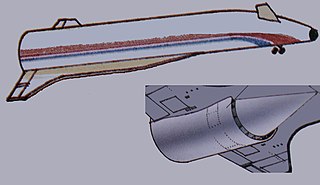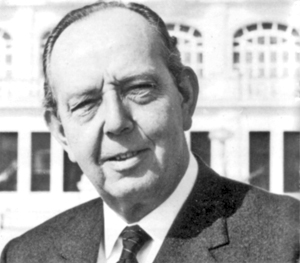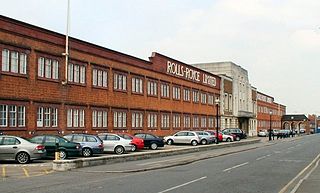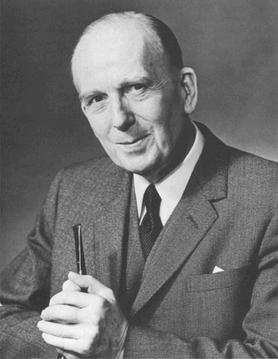Related Research Articles

HOTOL, for Horizontal Take-Off and Landing, was a 1980s British design for a single-stage-to-orbit (SSTO) spaceplane that was to be powered by an airbreathing jet engine. Development was being conducted by a consortium led by Rolls-Royce and British Aerospace (BAe).

The Bristol Aeroplane Company, originally the British and Colonial Aeroplane Company, was both one of the first and one of the most important British aviation companies, designing and manufacturing both airframes and aircraft engines. Notable aircraft produced by the company include the 'Boxkite', the Bristol Fighter, the Bulldog, the Blenheim, the Beaufighter, and the Britannia, and much of the preliminary work which led to Concorde was carried out by the company. In 1956 its major operations were split into Bristol Aircraft and Bristol Aero Engines. In 1959, Bristol Aircraft merged with several major British aircraft companies to form the British Aircraft Corporation (BAC) and Bristol Aero Engines merged with Armstrong Siddeley to form Bristol Siddeley.

Bristol Aerospace is a Canadian aerospace firm located in Winnipeg, Manitoba and is an operating division of Magellan Aerospace. Once part of the Bristol Aeroplane Company, today it is known as Magellan Aerospace, Winnipeg.

Skylon is a series of concept designs for a reusable single-stage-to-orbit spaceplane by the British company Reaction Engines Limited (Reaction), using SABRE, a combined-cycle, air-breathing rocket propulsion system.

SABRE is a concept under development by Reaction Engines Limited for a hypersonic precooled hybrid air-breathing rocket engine. The engine is being designed to achieve single-stage-to-orbit capability, propelling the proposed Skylon spaceplane to low Earth orbit. SABRE is an evolution of Alan Bond's series of LACE-like designs that started in the early/mid-1980s for the HOTOL project.

Volvo Aero was a Swedish aircraft, guided missiles and rocket engine manufacturer. It became GKN Aerospace Engine Systems following the company's acquisition by British engineering conglomerate GKN during 2012.

Walter Owen Bentley, was an English engineer who founded Bentley Motors Limited in London. He was a motorcycle and car racer as a young man. After making a name for himself as a designer of aircraft and automobile engines, Bentley established his own firm in 1919. He built the firm into one of the world's premier luxury and performance auto manufacturers, and led the marque to multiple victories at the 24 Hours of Le Mans. After selling his namesake company to Rolls-Royce Limited in 1931, he was employed as a designer for Lagonda, Aston Martin, and Armstrong Siddeley.
Armstrong Siddeley was a British engineering group that operated during the first half of the 20th century. It was formed in 1919 and is best known for the production of luxury vehicles and aircraft engines.

Bristol Siddeley Engines Ltd (BSEL) was a British aero engine manufacturer. The company was formed in 1959 by a merger of Bristol Aero-Engines Limited and Armstrong Siddeley Motors Limited. In 1961 the company was expanded by the purchase of the de Havilland Engine Company and the engine division of Blackburn Aircraft. Bristol Siddeley was purchased by Rolls-Royce Limited in 1966.
Alan Bond is a British mechanical and aerospace engineer, who served as Managing Director of Reaction Engines Ltd and associated with Project Daedalus, Blue Streak missile, HOTOL, Reaction Engines Skylon and the Reaction Engines A2 hypersonic passenger aircraft.

Sir Stanley George Hooker, CBE, FRS, DPhil, BSc, FRAeS, MIMechE, FAAAS, was a mathematician and jet engine engineer. He was employed first at Rolls-Royce where he worked on the earliest designs such as the Welland and Derwent, and later at Bristol Aero Engines where he helped bring the troubled Proteus turboprop and the Olympus turbojet to market. He then designed the famous Pegasus vectored thrust turbofan used in the Hawker Siddeley Harrier.
Leonard John Kensell Setright was an English motoring journalist and author.

Rolls-Royce Limited was a British luxury car and later an aero-engine manufacturing business established in 1904 in Manchester by the partnership of Charles Rolls and Henry Royce. Building on Royce's good reputation established with his cranes, they quickly developed a reputation for superior engineering by manufacturing the "best car in the world". The business was incorporated as "Rolls-Royce Limited" in 1906, and a new factory in Derby was opened in 1908. The First World War brought the company into manufacturing aero-engines. Joint development of jet engines began in 1940, and they entered production in 1944. Rolls-Royce has since built an enduring reputation for the development and manufacturing of engines for military and commercial aircraft.
Peter Lloyd CBE, was a mountaineer and engineer, a President of the Alpine Club.

Reaction Engines Limited is a British aerospace manufacturer based in Oxfordshire, England.

The aerospace industry of the United Kingdom is the second-largest national aerospace industry in the world and the largest in Europe by turnover, with a global market share of 17% in 2019. In 2020, the industry employed 116,000 people.
Alfred Cyril Lovesey CBE, AFRAeS, was an English engineer who was a key figure in the development of the Rolls-Royce Merlin aero engine.
John Lanfear Scott-Scott was a British mechanical and aerospace engineer. After graduating from the University of Birmingham, he joined Armstrong Siddeley Motors in 1955, becoming a hydrodynamicist at their Rocket Department. He worked there on Black Arrow, making important contributions to the fuel pump system.

Sir William Richard Joseph Cook, was a British civil servant and mathematician.

The Rolls-Royce Heritage Trust is an organisation that was founded in 1981 to preserve the history of Rolls-Royce Limited, Rolls-Royce Holdings and all merged or acquired companies. Five volunteer led branches exist, three in England, one in Scotland and a North American branch.
References
- ↑ Develop3DLive
- ↑ Department of Aerospace Engineering
- ↑ Reaction Engines Archived 27 June 2016 at the Wayback Machine
- ↑ Family